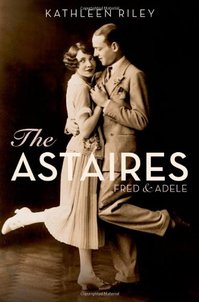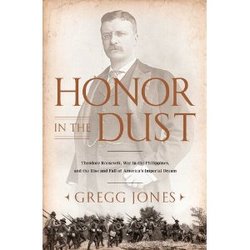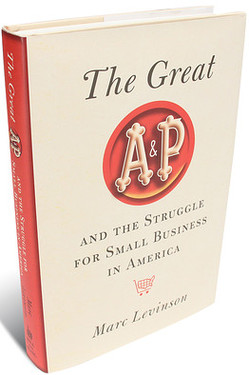Source of book image:
http://ecx.images-amazon.com/images/I/513pEMI-LeL._.jpg
(p. C6) The Astaire universe was made of crazy joy, that guiltless worldview unique to the art of the American 1920s. The Astaires’ trademarked exit was the gleefully mischievous “runaround,” in which they trotted about the stage in ever increasing circles as if joined at the hip, expanding their geometry till they reached the wings and vanished. It was goofy and expert at once, a way of defining musical comedy as the state of being young, cute and in love with life.
. . .
“For all their jazz-fueled modernity,” Ms. Riley writes of the Astaires’ London réclame, they were “anti-modernist.” This pair was more than sunshine. The sheer zest with which they frisked through a show ran “counter to High Modernism’s pervasive sense of the instability of the self and the universe.” This was the time, Ms. Riley notes, of “The Waste Land,” “Ulysses,” “Vile Bodies.” Art was in despair. But the Astaires’ “defiant New World optimism” proved a remedy: meeting cute, assuming disguises and high-hatting the blues with fascinating rhythm. It’s a very American notion: that a strong foundation in popular art creates a positive worldview in general. Call it the audacity of charm.
. . .
They don’t make shows that way anymore, and Ms. Riley’s book is thus a resuscitation of a naive but perhaps more authentically native showbiz, an art of natural forces. “The Astaires” is a salute to an America at ease with itself and doing something wonderful in the song-and-dance line that seemed, for a time, like the hottest thing in the culture.
For the full review, see:
Kathleen Riley. “BOOKSHELF; Sibling Revelry.” The Wall Street Journal (Sat., March 3, 2012): C6.
(Note: ellipses added.)
The book under review is:
Riley, Kathleen. The Astaires: Fred & Adele. New York: Oxford University Press, USA, 2012.





